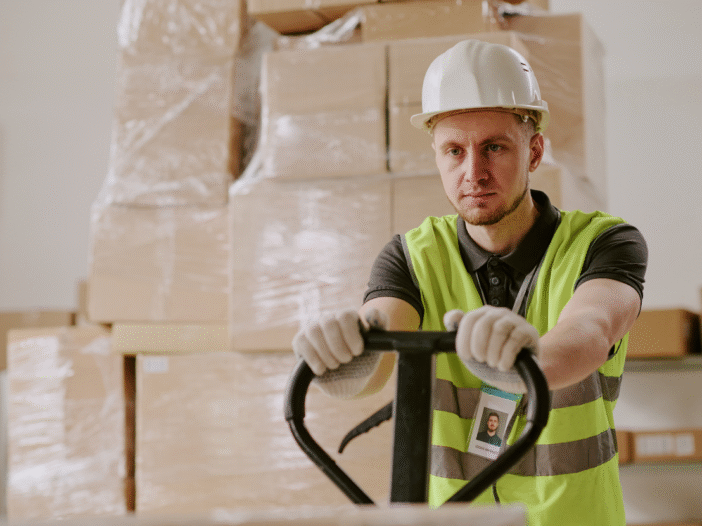
This is a guide to completing the IOSH risk assessment which is part of the final assessment for IOSH Managing Safely. Here we provide you with IOSH risk assessment example answers to illustrate key components and best practices.
How IOSH Managing Safely is assessed
IOSH Managing Safely is the industry standard for health and safety training. The course equips managers and supervisors with the essential knowledge and skills to manage health and safety in the workplace effectively.
Developed by the Institution of Occupational Safety and Health (IOSH), this course covers all aspects of health and safety requirements, including managers’ responsibilities, how to manage workplace risks, and how to conduct investigations.
To pass IOSH Managing Safely, you must complete two assessments:
- 30-multiple choice questions. This evaluates your understanding of the health and safety principles and practices covered in the course.
- IOSH Managing Safely risk assessment. You are required to apply your knowledge by conducting a risk assessment for a workplace of your choice to demonstrate your ability to identify, evaluate and manage potential hazards effectively.
How marks are allocated for IOSH Managing Safely risk assessment
The pass mark for the IOSH Managing Safely risk assessment is 23/38.
| Top of form – your name, the date and time, and a brief description of the work area and task being assessed. | 1 mark |
| Hazard 1 | 9 marks |
| Hazard 2 | 9 marks |
| Hazard 3 | 9 marks |
| Hazard 4 | 9 marks |
| Bottom of form – the date the risk assessment will be reviewed and your signature. | 1 mark |
For each hazard assessed you can achieve a maximum of 9 marks. The 9 marks are allocated as follows:
| What is the hazard? | 1 mark |
| Who might be harmed and how? | 1 mark |
| What existing control measures are in place? | 1 mark |
| What is the current risk rating? | 1 mark |
| What additional controls could be implemented? | 1 mark |
| What would the new risk rating be with additional controls? | 1 mark |
| Who will implement the additional controls? | 1 mark |
| When will the additional controls be implemented? | 1 mark |
Let’s look at each section of the IOSH risk assessment form in turn.
IOSH risk assessment example
Write your name and the date and time you carried out the risk assessment.
Describe the work area and task being assessed as specifically as possible. Here’s an IOSH risk assessment example answer:
Work area: second floor office suite, 500 square metres, compromising an open-plan office space and private offices, with up to 30 people working at any given time. The office suite includes a kitchen area, meeting room, and a server room.
Task being assessed: carrying boxes of photocopier paper from meeting room to open-plan office space.
What is the hazard?
Choose four hazards that are not being well controlled and have the potential to cause serious injuries.
Be very specific when describing hazards. Here are some IOSH risk assessment sample answers:
Instead of writing ‘slips, trips and falls’ or ‘power cables’, you might write: ‘power cables and network cables run loosely across the floor between workstations’.
Instead of writing ‘working at height’ or ‘moving boxes’, you could write: ‘employees stand on chairs to reach and retrieve large box files from high shelves’.
Who might be harmed and how?
Take the time to consider all those who may come into contact with the hazard and not just those who are immediately obvious. For example, could the hazard affect visitors and contractors as well as employees?
List all the people who may be harmed with numbers, whenever possible.
For instance:
- 25 employees
- Up to 10 contractors a day
- 3 cleaners
- Up to 15 visitors a day
Be careful not to just copy and paste the same list for each of the four hazards you assess. It might be that only 9 employees and 1 cleaner are affected by trailing electrical cables in a particular part of an office and not ‘25 employees’ and ‘up to 10 contractors’ etc.
Explain how people might be harmed as precisely as possible. For example:
‘An employee walking through the office might catch their foot on a loose cable causing them to trip and fall. This could cause sprains and strains, fractures, bruises, cuts and lacerations, or severe head or spinal injuries.’
What existing control measures are in place?
In this column do not say there are no control measures in place because there most likely are. If you say there are no control measures it may indicate that you haven’t noticed them.
At the same time, it is best not to list too many control measures because this could show that the hazard is already being well controlled and so should not be on your list.
Controls to look for might be safety equipment, training, supervision, inspections, and signage.
What is the current risk rating?
Calculating a risk rating is subjective, but it is important to consider it very carefully because the examiner will expect you to reach a number that is reasonable. If you are unsure, revisit module 2 of IOSH Managing Safely where this is covered in detail.
To obtain a risk rating (R) decide on a likelihood rating (L) that is between 1 and 5, and a consequence rating (C) between 1 and 5 and then multiply the two numbers.
R = L x C
| Likelihood – the chance a hazardous event will occur | |
| 1 | Very unlikely |
| 2 | Unlikely |
| 3 | Fairly likely |
| 4 | Likely |
| 5 | Very likely |
| Consequence | |
| 1 | Insignificant – no injury |
| 2 | Minor – minor injuries requiring first aid |
| 3 | Moderate – up to 7 days absence from work |
| 4 | Major – more than a week’s absence from work |
| 5 | Catastrophic – death |
| Risk rating action levels | |
| 1-2 | No action needed. However, control measures must be monitored and maintained. |
| 3-6 | Periodically monitor and review the measures in place. Make changes if improvements are needed or if there is a significant change. |
| 8-12 | Make improvements to control measures within a specific timescale. |
| 15-16 | Take urgent action by stopping the activity if necessary or implementing rigorous control measures. |
| 20-25 | Stop the activity and take immediate action. |
What additional controls could be implemented?
Carefully consider what measures to put in place to control risks and be as specific as possible. For example, instead of writing ‘training’, say what type of training is required and who needs it.
If there are already controls in place to reduce a particular risk think about what additional controls are needed.
For instance, if chemicals are currently stored in labelled, secure cabinets an additional control might be to conduct regular inspects of the storage area to ensure all chemicals are stored correctly, containers are intact, and labels are legible and up to date.
What would the new risk rating be with additional controls?
Calculate what the risk rating would be once control measures are in place. Remember that the likelihood rating level might decrease but the consequence level may not.
For example, if you put signage in place to draw people’s attention to a slippery floor you reduce the likelihood of a fall, but if someone does fall the consequences will be the same.
Make sure your new risk rating is lower than the original risk rating you calculated.
Who will implement the additional controls?
Write down who will implement each control measure along with their job title. For instance, ‘Provision of ladder safety training – Facilities Manager’.
When will the additional controls be implemented?
Enter a deadline next to each control measure to state when it will be implemented by. Always write an exact date and do not write ‘as soon as possible’ or ‘immediately’.
When considering deadlines for implementing safety measures consider the risk rating action levels in the table above.
Bottom of form
At the bottom of the IOSH risk assessment form write a date when the risk assessment will be reviewed (usually in 6- or 12-months’ time). Sign the assessment and write the name of your training provider, e.g. Praxis42.
How to submit your IOSH risk assessment
You need to submit your IOSH risk assessment to us within 14 days of completing IOSH Managing Safely. If you have passed the multiple-choice element of the course and the risk assessment, you will receive your IOSH Managing Safely certificate within 12 weeks.
Praxis42 IOSH Managing Safely course

Built by our learning development team in partnership with our experienced health and safety professionals, IOSH Managing Safely is engaging, interactive and thoroughly comprehensive.
To find out more about what is covered in IOSH Managing Safely, please contact our friendly team on 0203 011 4242 or info@praxis42.com

Tom Escobar
Director of Services & Training
